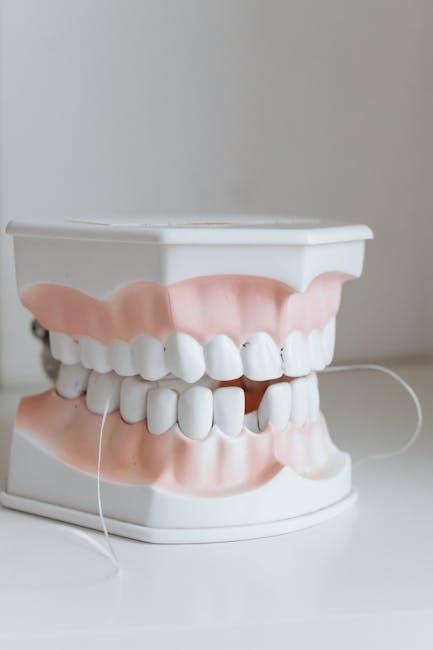Fluoride Ban Could Create Cavities For 1 Of Every 3 U.S. Kids – U.S. News & World Report
Fluoride has long been hailed as a silent guardian protecting the dental health of millions of Americans, especially children. However, recent discussions and proposals to ban fluoride in public water supplies could inadvertently pave the way for a dental health crisis among kids across the U.S. According to U.S. News & World Report, a fluoride ban could lead to cavities for 1 out of every 3 U.S. children. This comprehensive article explores the potential impacts of such a ban, the critical role fluoride plays in preventing tooth decay, benefits of fluoridated water, and practical tips for parents to keep their kids’ smiles healthy.
Understanding the Fluoride Ban and Its Implications
Fluoride is a mineral known for its proven benefits in reducing the prevalence of dental cavities (tooth decay) by strengthening tooth enamel and making it more resistant to acid attacks from bacteria in the mouth. Despite its well-documented benefits, some communities and advocacy groups have pushed for banning fluoride in drinking water because of concerns about overexposure or alleged health risks.
The U.S. Centers for Disease Control and Prevention (CDC) credits water fluoridation as one of the 10 great public health achievements of the 20th century. Fluoride is added to public water systems to reach a target concentration of about 0.7 mg/L, which maximizes cavity prevention while minimizing risk.
How Could a Fluoride Ban Affect Kids?
- Increased Risk of Tooth Decay: Without fluoride, children become more vulnerable to cavities. Dental decay can lead to pain, infections, costly dental treatments, and even impacts on overall health.
- Inequity in Dental Health: Low-income families that rely on community water fluoridation as an affordable cavity prevention method may face greater risks.
- Higher Healthcare Costs: More cavities often mean increased dental treatment costs, putting a financial burden on families and health insurance providers.
Experts estimate that a fluoride ban could cause cavities in roughly one-third of all U.S. children, representing millions of kids nationwide.
The Benefits of Fluoridated Water for Children’s Dental Health
Fluoridated water is a safe, cost-effective public health measure to prevent tooth decay. Below are some key reasons why fluoride is vital for children:
- Strengthens Tooth Enamel: Fluoride helps remineralize and harden tooth enamel, making it resistant to decay caused by acids from plaque bacteria.
- Reduces Cavities Significantly: Studies show fluoridated water reduces tooth decay by about 25% in children and adults.
- Accessible for Everyone: Unlike dental products that require a purchase, fluoridated water benefits all residents with access to public water supplies.
- Supports Overall Oral Health: Reduces the prevalence of painful cavities that can disrupt eating, speaking, and school attendance for kids.
Additional Fluoride Sources for Kids
Parents should also be aware of other fluoride sources that complement water fluoridation:
- Fluoridated toothpaste (use age-appropriate amounts and supervision)
- Prescription fluoride rinses or gels for high-risk children
- Fluoride varnish treatments by dental professionals
Practical Tips for Parents to Protect Kids’ Dental Health if Fluoride is Restricted
If local laws or policies restrict fluoride use, parents can take proactive measures to safeguard their children’s oral health:
- Maintain a Consistent Oral Hygiene Routine: Brush teeth twice daily with fluoride toothpaste and floss regularly.
- Limit Sugary Foods and Drinks: Sugary and acidic diets fuel cavity-causing bacteria.
- Schedule Regular Dental Checkups: Early detection and treatment of cavities can prevent complications.
- Consider Fluoride Supplements: Consult your child’s dentist about fluoride tablets or drops if water fluoridation isn’t available.
- Encourage Healthy Snacks: Fruits, vegetables, and dairy can support strong teeth.
Case Study: Impact of Fluoride Removal in Communities
When the city of Portland, Oregon, stopped fluoridating their water supply in 2013, local dentists observed a sharp increase in cavities among children just a few years later. Here’s a simplified comparison from dental health reports before and after the fluoride ban:
| Year | Child Cavity Rate (%) | Fluoride Status |
|---|---|---|
| 2012 | 28% | Fluoridated Water |
| 2017 | 42% | No Fluoride |
This data affirms the vital role that community water fluoridation plays in protecting children’s teeth.
Frequently Asked Questions (FAQs)
Is fluoride safe for children?
When used at recommended levels, fluoride is safe and effective. The CDC and American Dental Association endorse water fluoridation as a proven public health measure.
Can fluoride cause fluorosis?
Dental fluorosis is a mild discoloration that can happen with excessive fluoride ingestion during tooth development. Proper dosing and supervision when using fluoride products prevent this.
What should parents do if their community bans fluoride?
Parents should enhance oral hygiene practices, consult dentists for alternative fluoride sources, and encourage a healthy diet to minimize cavity risks.
Conclusion: Why Fluoride Should Remain a Cornerstone of Children’s Dental Health
The potential fluoride ban threatens to undo decades of progress in fighting childhood tooth decay. With risks estimated to impact 1 in every 3 U.S. kids, banning fluoride from public water supplies could lead to a surge in painful, preventable dental cavities—particularly among vulnerable communities. While concerns about fluoride safety should be carefully addressed, the overwhelming scientific consensus supports its safe use at optimal levels.
Parents, healthcare providers, and policymakers must work together to preserve fluoride’s role in protecting children’s dental health, ensuring that future generations enjoy healthy, cavity-free smiles.
Protecting your child’s smile starts with informed decisions—stay educated, visit your dentist regularly, and support safe fluoride use in your community.


